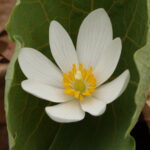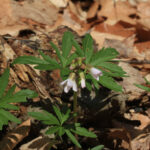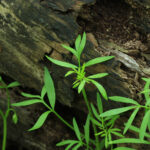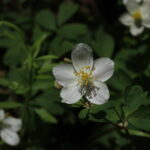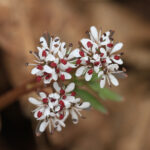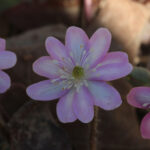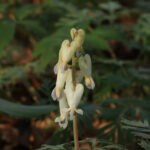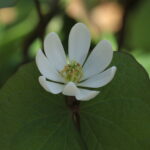Even though skunk cabbage and harbinger-of-spring bloom in March here in west Michigan, most of the spring ephemerals bloom in April to early May. Spring ephemerals bloom early before the leaves are fully on the trees, allowing them to take advantage of the sunlight reaching the forest floor in early spring. Most spend much of the year underground, unnoticeable to those walking in the woods in the summer and fall. Growth begins in the fall and continues through the winter underground, as the “hypogeous” phase. Throughout the winter months, root growth and bud development in the bulbs and rhizomes is taking place at a time when we think that nothing is growing in these cold months. From these buds will come the delicate blooms of early spring.
The short lived above ground phase known as “epigeous,“ lasts for only a few weeks to a couple of months. This is the time when the plant blooms, sets seed, produces and stores energy in the roots or bulbs. This above ground activity happens while they can take advantage of the available light in the spring woods. With cold nights possible, these lovely native plants can tolerate freezing temperatures for a time without damage to the plant. Some trap warmth with the hairs on the stems and leaves, while others like bloodroot trap warmer air in the leaves curled around the flower stem. Many of these are pollinated by native solitary bees that emerge in synchronization with the bloom time. Some of these bees are also “specialist,” visiting only one species of flower. Some flowers, like spring beauty only bloom in the sun, closing in the shade and every evening.
Photosynthesis is best at 68° F or above, so much food production needs to done in a short time. Nutrient uptake can also be difficult in cool weather. These plants need to be efficient as energy needs to be allocated to producing and storing food as well as seed production without any wasted resources. While most of the spring ephemerals in Michigan are found in rich deciduous woods or forests, those without bulbs or thick rhizomes may more often be found in thick leaf litter. Two good examples of plants with more and smaller roots found in these less rich soil areas are dutchman’s breeches and squirrel corn. Both have very small bulbs or corms near the surface, but put out many roots for nutrient intake.
Early spring is a magical time in the woods. Temperatures are comfortable, mosquitoes are minimal to non-existent and the forest floor is peppered with the delicate sprig ephemerals. Visit a woods near you in the next few weeks and enjoy these visual treats.
- Bloodroot
- Cut-leaved Toothwort
- False Mermaid
- False Rue Anemone
- Harbinger-of-spring
- Hepatica
- Pink Spring Cress
- Spring Beauty
- Squirrel Corn
- Twinleaf
- Yellow Adders Tongue
 Click on the title of a post to view a full gallery of images.
Click on the title of a post to view a full gallery of images.
